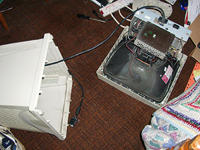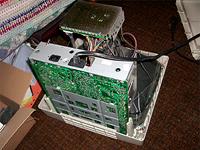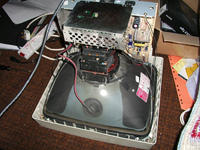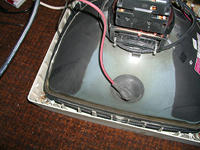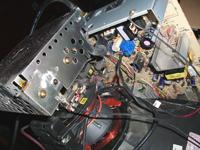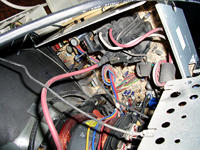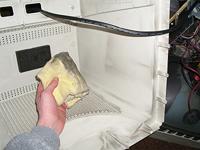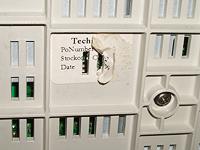Cleaning a monitor
There are a few computer users left in the world who can still recall what a CRT computer monitor is. Personally, I continue to swear by them simply because I have never seen a flat screen monitor capable of showing true black contrast and consistent levels from top to bottom, important for graphic design and image manipulation.
However, as with any classic equipment, the things need to be maintained now and then. In the case of a monitor in a damp environment (e.g. my room) the dust build up in the screen attracts moisture and becomes conductive. This leads to (as I understand it) arcing over between the and the back of the tube itself. Each arc causes the image on the screen to become large and dim, and the sound and sudden image change makes me jump. Eventually, it will ruin the monitor, I’m told.
The solution is to clean all the dust out of the screen. Since dust makes me sneeze (as it does anyone), for this task I had to transform into …
Monitor Bandit. In my superhero state, I am also invincible to the thousands of volts of static charge inside the tube, but you aren’t, so do be extremely careful if you want to attempt this. Better still, don’t.
The first step is to take apart the monitor, a Chuntex (CTX) 17″ computer monitor:
You can see the main printed circuit board, and the cathode ray tube itself. This is the part that is bigger on the inside than the outside and responsible for all those exaggerated claims of monitor tube diameter. It was also covered in grime, as was the red EHT lead; all the insides were pretty dusty. They got a good clean with a plastic-handled paintbrush, and then a duster to remove what was left.
Here are some dizzying and disorientating views of the circuitry itself:
The grime itself isn’t all that evident, although you can see a lof of the dust. The grime is more visible on the case itself, the insides of which were filthy too:
Now it is all nice and clean, and seemingly working correctly again. I am not getting arc-overs every few minutes like I was the night before.
Here’s the funny part. As I was re-assembling the monitor, I spotted something. A sticky label, placed on by the computer’s vendor, attached to the underside of the case, within the area normally covered by the stand:
When you attach the stand, six lugs slot into the base of the monitor. This label gets in the way of one of them and has thus had a hole ripped in it. I can imagine someone saying, Just doin’ me job, mate!
Addendum: Had the screen running a while and got another arc. It’s as clean as I could get it, so maybe that screen is in its death throes?

